Vietnam is a land of breathtaking contrasts, where vibrant cities meet serene rice paddies and ancient history intertwines with modern life. As a country with a rich tapestry of culture, history, and natural beauty, deciding what to see can be overwhelming. This guide cuts through the noise, highlighting the absolute must-see destinations and experiences across Northern and Central Vietnam, focusing on the essential Things To See In Vietnam that will enrich your journey. Get ready to explore stunning landscapes, delve into fascinating history, savor exquisite cuisine, and immerse yourself in local life, ensuring your trip is filled with unforgettable moments.
Northern Vietnam Wonders: Essential Things To See In Vietnam
Northern Vietnam offers a dramatic landscape of karst mountains, bustling cities, and serene valleys. This region is home to some of the most iconic Things To See In Vietnam, drawing travelers seeking natural beauty and cultural immersion. From the legendary bays to mountainous trekking routes, the north provides a diverse range of adventures.
Ha Long Bay & Lan Ha Bay
Recognized as a UNESCO World Heritage Site, Ha Long Bay is undeniably one of the top Things To See In Vietnam and a place often compared to global marvels like Machu Picchu. Its iconic landscape features thousands of towering limestone karsts and islands scattered across the emerald waters of the Gulf of Tonkin.
Cruising is the quintessential way to experience the bay, allowing you to sail through this stunning scenery, explore hidden coves, swim, and indulge in incredibly fresh seafood right from the source. While day trips are available, opting for a multiple-day cruise on a houseboat offers a more immersive experience, letting you wake up surrounded by the bay’s tranquility. Cruises cater to various budgets, from affordable options to luxurious vessels.
Historically, the larger area encompassing Ha Long Bay was managed by different local governments, splitting it into northern (Ha Long Bay) and southern (Lan Ha Bay) sections, the latter bordering Cat Ba Island. Both are included within the UNESCO area, but they offer slightly different experiences. Ha Long Bay is known for having more boats operating, particularly popular with tourists from China, and features impressive caves and viewpoints mentioned in the UNESCO nomination. Lan Ha Bay, while sharing the same dramatic karst scenery, tends to be less crowded and less polluted, offering a quieter escape. It has fewer caves and developed viewpoints compared to Ha Long Bay.
Booking a cruise in advance, especially for luxury options like the Ginger by Heritage Line, is advisable as they can fill up months ahead. Budget tours can often be booked closer to the date via platforms like Klook or GetYourGuide. For those wanting to experience the best of both worlds, booking back-to-back one-night trips on different boats might be an option, though only a few operators have the necessary permits to navigate both bays.
For ideal weather with blue skies, plan your visit between April and October. June to August can be very hot but sees fewer tourists. November to March brings cooler temperatures, sometimes with consistent gray skies, especially in January. September and October are peak tourist months. The author’s personal visits have been in January (cooler, gray) and July (hotter, blue skies), preferring July for photography.
What to Eat in Fort Worth – A Culinary Deep Dive
Discover the Top Restaurants in Denver – A Culinary Journey
Discover Where to Visit in Las Vegas
Most travelers reach Ha Long Bay via Hanoi’s Noi Bai International Airport, Vietnam’s second-largest. Transfers from Hanoi to the bay typically take around three hours by road. Many boat tours include transfers, but affordable options can also be booked independently through services like Klook. Smaller airports closer to the bay exist (Van Don, Cat Bi), but Hanoi offers the most flight connections.
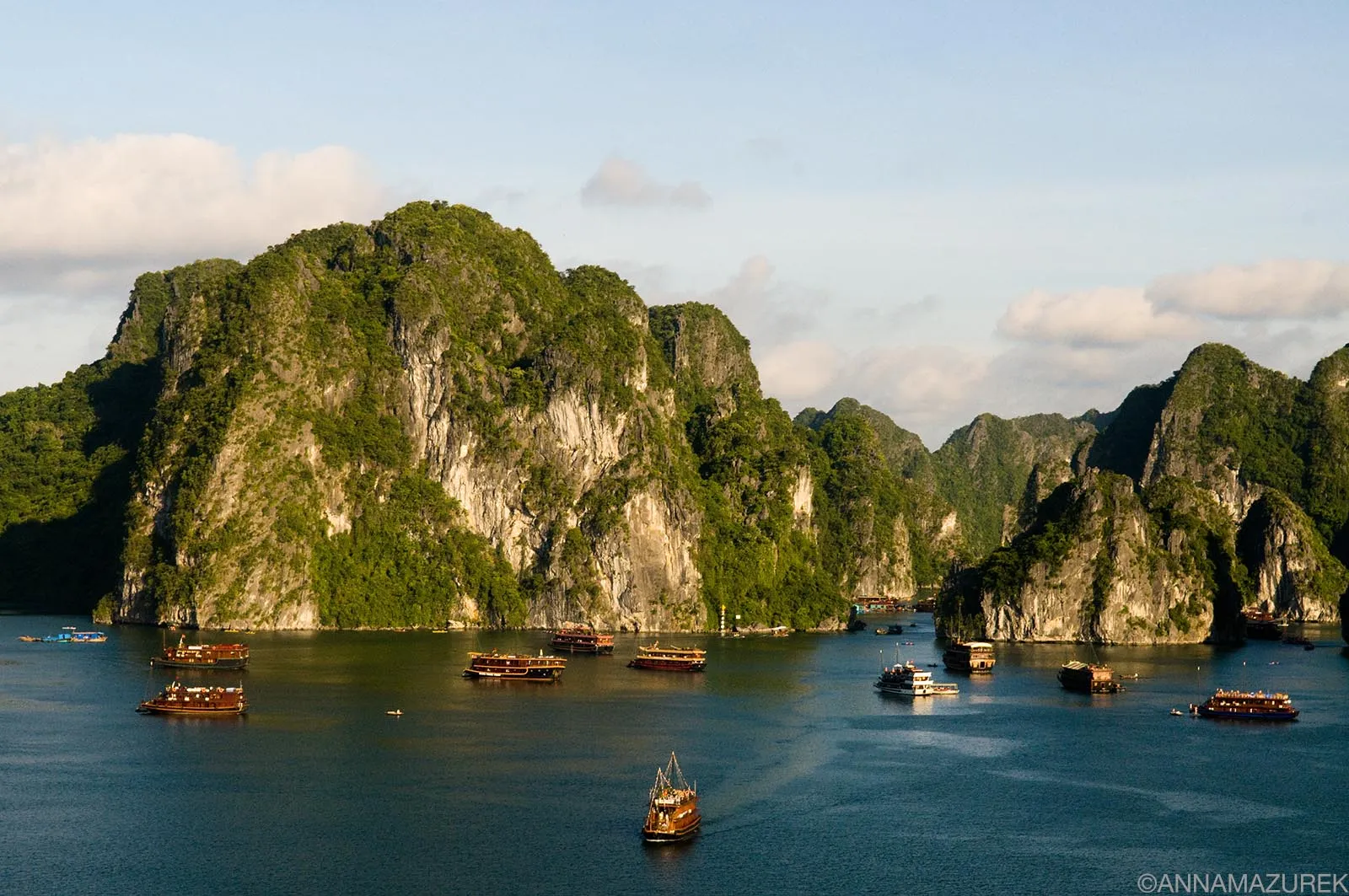
A stunning panoramic view of limestone karsts rising from the emerald waters of Ha Long Bay, Vietnam, under a blue sky.
Ninh Binh Province
Often dubbed the “Ha Long Bay on land,” Ninh Binh province is a stunning inland destination and a key highlight among Things To See In Vietnam. It’s famous for its dramatic karst landscapes intersected by rivers, offering unique rowboat tours through caves and alongside towering limestone formations. The most highly recommended boat trip is the Trang An (Route 3) tour. This approximately three-hour journey takes you through spectacular scenery, including the impressive kilometer-long Hang Dot cave, providing an unforgettable experience of the natural beauty of the region.
Tam Coc offers another popular boat trip option, lasting about 1.5 hours. It’s particularly beautiful during the wet season when the surrounding rice fields are vibrant green. A unique feature of the Tam Coc boat tours is that the guides often row using their feet. While both tours are beautiful, Trang An is often considered superior if you only have time for one.
For panoramic views, a climb up the 500 stairs to the viewpoint at Mua Cave is highly recommended, especially when the rice fields below are green. Other significant sites in Ninh Binh include the picturesque Bich Dong Pagoda, a complex featuring a cave temple (free entry), and the vast Bai Dinh Pagoda. Bai Dinh is one of the largest Buddhist complexes in Southeast Asia, covering 4,200 acres, easily explored via electric shuttle carts.
Hoa Lu Old Town in Ninh Binh City is a newer, striking attraction built in 2022. It features two modern pagodas beautifully lit at night with detailed carvings inside. It’s important not to confuse this with Hoa Lu Ancient Town, the historic site located 11 kilometers away, which served as the first capital of Vietnam. Tam Coc is a popular base for exploring the area, offering convenient access to many sites. Staying for a few nights allows ample time to see the highlights, although day tours from Hanoi are also available for those with limited time.
The Ninh Binh province is located approximately an hour and 45 minutes southeast of Hanoi. Public buses are the most budget-friendly transportation option from Hanoi. Shared transfers, offering direct drop-offs at hotels, are also available and relatively inexpensive, providing a convenient alternative to public transport for reaching this beautiful region and experiencing one of the essential Things To See In Vietnam.
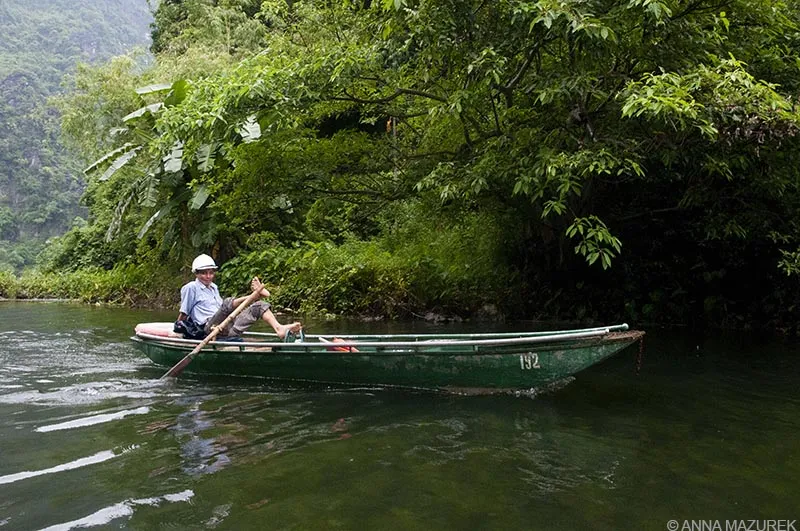 A person rowing a traditional Vietnamese boat with their feet through a cave tunnel, surrounded by lush green plants and rocky formations.
A person rowing a traditional Vietnamese boat with their feet through a cave tunnel, surrounded by lush green plants and rocky formations.
Sapa and the Northwestern Mountains
Nestled in the mountains near the Chinese border, Sapa is renowned as Vietnam’s premier trekking destination and a must-include in any list of Things To See In Vietnam for adventure lovers. Originally established as a hill station by the French in 1922, the town offers spectacular views of the surrounding valleys and terraced rice fields. The scenery here is truly unforgettable, providing some of the most iconic travel images from Asia.
Sapa serves as the gateway to numerous popular treks. These include conquering Fansipan, the highest mountain in Vietnam standing at 3143 meters, or visiting ethnic minority villages like Cat Cat (3 km south), Ta Phin (10 km hike), and Sa Seng & Hang Da (a hike along the eastern ridge known for valley views). While the natural beauty is immense, be prepared for persistent tourist touts and vendors, particularly in the villages. The author recounts an experience where vendors individually followed students in a group throughout a village visit. Despite this, the stunning landscape makes the trip entirely worthwhile for those seeking incredible mountain scenery and cultural encounters.
Sapa is located roughly 195 miles northwest of Hanoi, the closest major airport. Travel from Hanoi takes approximately five to six hours by car or bus, depending on traffic conditions. Another popular option is the overnight sleeper train from Hanoi to Lao Cai, which is the closest station to Sapa. From Lao Cai, it’s an additional 50-minute transfer to Sapa town. Cheaper alternatives include sleeper buses, which cost about half the price of the train ticket.
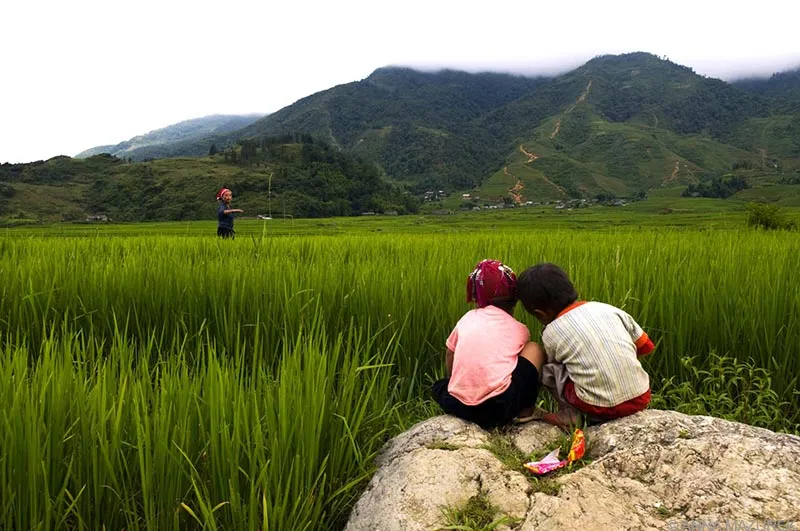 A panoramic view of lush green terraced rice fields cascading down steep mountain slopes in Sapa, Vietnam, with distant mountains under a slightly hazy sky.
A panoramic view of lush green terraced rice fields cascading down steep mountain slopes in Sapa, Vietnam, with distant mountains under a slightly hazy sky.
Hanoi: The Vibrant Capital
Hanoi, the capital city, is a whirlwind of activity and one of the most dynamic Things To See In Vietnam. It’s famous for its chaotic yet mesmerizing street life, dominated by a seemingly endless flow of motorbikes. Finding a safe spot on the sidewalk to watch the sheer volume and ingenuity of motorbike transport is an essential Hanoi experience – from refrigerators to entire families plus pets, the loads are often defying gravity and logic.
Exploring the maze-like streets of the Old Quarter is a highlight. This historic district is fascinatingly organized by the goods traditionally sold on each street, though this can be frustrating if you’re looking for something specific! While wandering, be sure to fuel up with Pho bo (beef noodle soup) for breakfast, a quintessential Vietnamese dish. Pair it with a traditional Vietnamese coffee, typically a dark roast brewed through a small metal drip filter, often served with condensed milk for a sweet kick.
For a delicious Banh Mi, a popular Vietnamese sandwich, Banh Mi 25 is highly recommended. For unique cafe experiences, The Note Cafe is known for its walls covered floor-to-ceiling in colorful post-it notes, making it an Instagram favorite. JOMA is a reliable cafe chain in Southeast Asia, good for breakfast or a coffee break. For an adrenaline rush, seek out Hanoi 1990s, a small cafe situated right on the edge of Hanoi’s famous train street. Here, trains rumble past just inches from your table a few times daily.
Take a leisurely stroll around Hoàn Kiếm Lake in the heart of the city. Cross the iconic red bridge to visit Ngoc Son Temple, situated on a small island in the lake. Other significant cultural and historical sites include the Temple of Literature, Vietnam’s first university, and the Ho Chi Minh Museum. Visitors can also pay respects to “Uncle Ho” at his mausoleum, where his embalmed body is on display in typical communist style. For a more in-depth exploration, specific guides to Hanoi are available, detailing many more fascinating sites and activities.
Hanoi is served by Vietnam’s second busiest airport, Noi Bai International. It is well-connected to major destinations across the country by bus and train. While Ho Chi Minh City handles more international traffic, Hanoi is easily accessible from abroad, making it a convenient starting point for exploring the Things To See In Vietnam, particularly in the north and central regions.
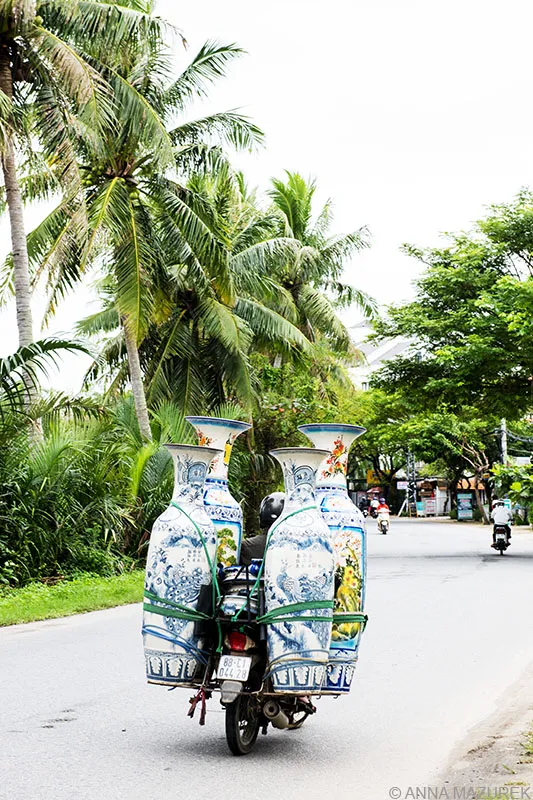 A bustling street scene in Hanoi, Vietnam, filled with motorbikes navigating through traffic, with buildings and shop signs lining the sides.
A bustling street scene in Hanoi, Vietnam, filled with motorbikes navigating through traffic, with buildings and shop signs lining the sides.
Central Vietnam Charms: Essential Things To See In Vietnam
Central Vietnam boasts a diverse landscape, from historic towns and ancient ruins to beautiful coastlines. This region offers a blend of cultural depth, historical significance, and culinary delights, featuring some truly enchanting Things To See In Vietnam.
Hoi An Ancient Town
Hoi An is often cited as a favorite city in Vietnam, and it’s easy to see why. This UNESCO World Heritage Site was once a major Southeast Asian trading port, and its historic charm is palpable. With its preserved colonial buildings and quaint streets, it has a similar feel to historic coastal cities elsewhere. Despite its popularity attracting many tourists, the beauty remains. Exploring the city is best done on foot, especially during the early morning or late afternoon. Key landmarks and essential Things To See In Vietnam in Hoi An include the iconic Japanese Covered Bridge, the Assembly Hall of the Cantonese Chinese Congregation with its impressive dragon carvings, and the Assembly Hall of the Fujian Chinese Congregation.
Hoi An is also a culinary hot spot, particularly famous for its Banh Mi and Cau Lau, a regional noodle dish. For Banh Mi, two highly recommended spots are Banh Mi Queen and Banh Mi Phuong, famously praised by Anthony Bourdain. The author specifically enjoyed the chicken Banh Mi at Banh Mi Queen. For an excellent bowl of Cau Lau, Streets Restaurant Cafe is highlighted not only for its delicious food but also for its mission as a non-profit organization training underprivileged youth in culinary and hospitality fields.
The closest airport to Hoi An is Da Nang International Airport, located about a 30-minute drive away. Transfers between Da Nang and Hoi An are readily available, ranging from affordable shared shuttles to private cars. Booking services like Klook offer easy options for arranging these transfers, though checking reviews is always a good idea before booking any service.
![]() The iconic Japanese Covered Bridge in Hoi An, Vietnam, spanning a small canal with traditional yellow-walled buildings and lanterns visible in the background.
The iconic Japanese Covered Bridge in Hoi An, Vietnam, spanning a small canal with traditional yellow-walled buildings and lanterns visible in the background.
Day Trips from Hoi An
Hoi An serves as an excellent hub for exploring surrounding attractions, adding more fascinating Things To See In Vietnam to your itinerary. One highly recommended day trip is to the ruins of My Son. This ancient Hindu temple complex, built between the 4th and 14th centuries, was dedicated to the god Shiva. Visiting My Son offers a glimpse into the Cham civilization that once flourished in this region.
To avoid the heat and crowds, especially for photography, booking a sunrise tour to My Son is strongly advised, as done by the author. While tours are convenient options from both Hoi An and Da Nang, it’s also possible to visit independently if you rent a motorbike. This provides flexibility to explore at your own pace.
Another fun and unique experience easily accessible from Hoi An is visiting the coconut village for a boat ride on one of the traditional circular basket boats. While quite touristy, it’s an enjoyable activity that offers a different perspective of the local waterways and environment. Renting a bicycle from Hoi An town is a popular and pleasant way to reach the coconut village, enjoying the scenery along the way.
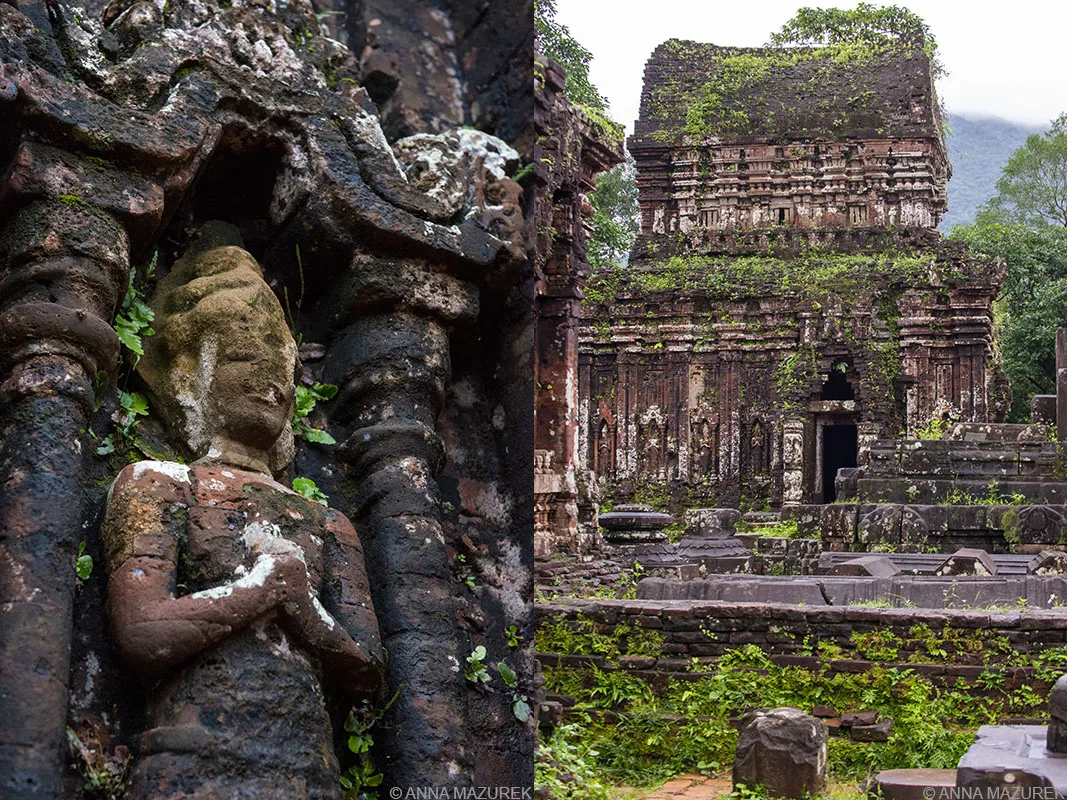 Ancient brick temple ruins standing among trees at the My Son Sanctuary in Vietnam, a Hindu temple complex, under a bright sky.
Ancient brick temple ruins standing among trees at the My Son Sanctuary in Vietnam, a Hindu temple complex, under a bright sky.
Frequently Asked Questions About Things To See In Vietnam
Here are some common questions travelers have when planning a trip focused on the essential Things To See In Vietnam:
Q: What is the best time of year to visit Vietnam?
A: Vietnam’s climate varies significantly between north, central, and south. Generally, the spring (February-April) and autumn (August-October) offer the most pleasant weather across the country. However, specific regions like Ha Long Bay and Sapa have optimal seasons (April-Oct for Ha Long, Sept-Nov and March-May for Sapa trekking).
Q: Is Vietnam expensive to travel in?
A: Vietnam is generally considered a very affordable destination for travelers, especially compared to Western countries. Accommodation, food, local transport, and activities are typically budget-friendly, though luxury options are also available.
Q: How do I get around Vietnam?
A: Vietnam has a good transportation network. For long distances, options include overnight trains, sleeper buses, and domestic flights. Within cities, taxis, ride-sharing apps (like Grab for motorbikes and cars), and cyclos are common. Renting motorbikes is popular for exploring regions like Ninh Binh or for day trips.
Q: Is Vietnamese food safe to eat?
A: Yes, Vietnamese food is generally safe and delicious! Street food is a highlight, but it’s wise to choose stalls that are busy with locals and appear clean. Eating at restaurants is also widely available and safe.
Q: Do I need a visa to visit Vietnam?
A: Visa requirements depend on your nationality and the length of your stay. Many nationalities can enter Vietnam visa-free for a limited period. Others may need to apply for a visa beforehand, either through an embassy/consulate or via an e-visa system. Check the latest visa regulations specific to your passport before traveling.
These insights cover just a fraction of the incredible Things To See In Vietnam. From the dramatic bays and mountains of the north to the historic towns and ancient sites of the center, Vietnam promises a journey filled with stunning landscapes, rich history, vibrant culture, and unforgettable culinary experiences. Plan your trip and discover the magic of this captivating country.
